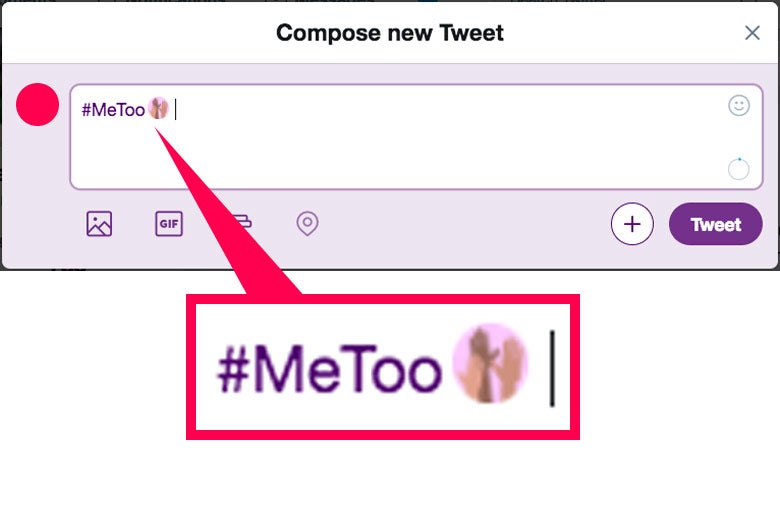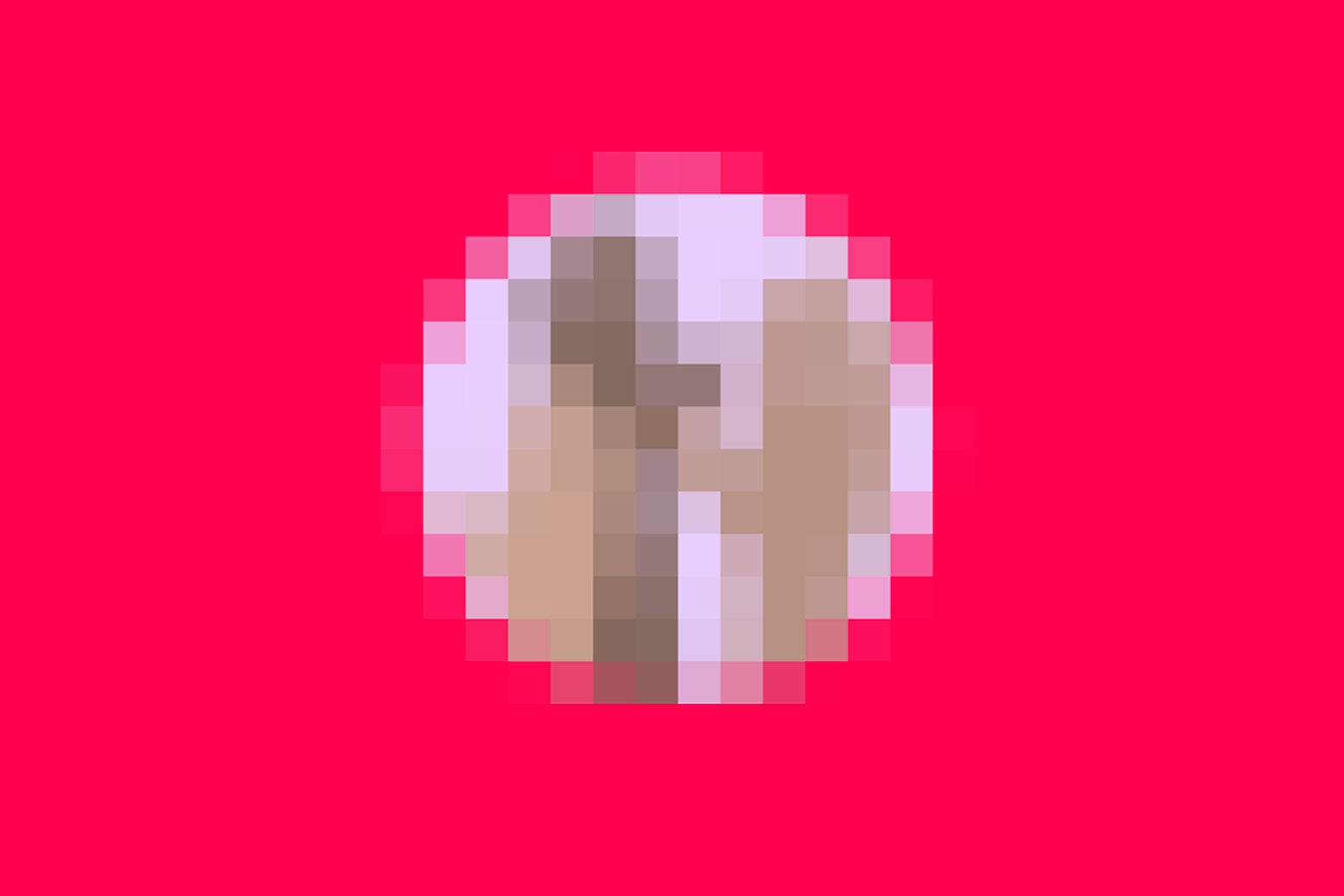How do we know #MeToo is a certified important cultural movement? By the impact it’s had and the controversies it’s stirred, of course, but also because Twitter, that most discerning of arbiters, decided to give it a custom emoji. The icon that automatically appears alongside the hashtag #MeToo in tweets debuted in October, channeling this moment of reckoning into a cutesy pixelated graphic, because that’s what we do now.
But have you ever actually looked closely at this branded emoji?
Enhance. Enhance. What is it?

Colleagues have suggested to me that the emoji resembles, erm, a female body part. The flesh tones, the apparent middle fold … OK, I’m just going to say it: Is it female genitalia? Because #MeToo is a movement about women and not molesting them, so Twitter decided the best way to represent it was with a vagina? I would ask if Twitter could really be that stupid, but we all know the answer: yes.
Twitter introduced branded emojis in 2015, and when sponsored by actual brands, they can cost seven figures, AdWeek has reported. “In addition to the sponsored emojis, Twitter has also designed icons for big cultural events like the 2016 Election, the Chinese New Year and Star Wars that are sure to be buzzy conversations on social media.” So fun that the assault and harassment of women is a buzzy enough conversation on social media to warrant its own icon, right, ladies? This conflation of TV-event live-tweeting and brands like Coca-Cola with movements like Black Lives Matter (which also got a custom Twitter emoji) can feel icky, regardless of whether Twitter takes the added step of designing a symbol that seems to resemble a vagina. As critics of Twitter like journalist Margaret Lyons have pointed out, Twitter’s eagerness to capitalize on progressive political movements is also hard to square with the service’s frequently slow or nonexistent action in curbing harassment by its own users.

Only after some further research did I figure out what the #MeToo emoji was actually supposed to be: three hands raised up, against a light pink background. Once you see that, it’s thankfully hard to unsee, but was this obvious from the start to everyone else? Because here we all thought we must be looking at labia.
So: three hands raised up. I guess a tiny tableau of a man (probably wearing a robe) harassing a nice lady would have been considered disrespectful? In comparison to that, three little hands, even if they do look somewhat like female genitals, does feel more tasteful—inasmuch as transforming a movement into an adorable, shareable emoji can ever be tasteful.
